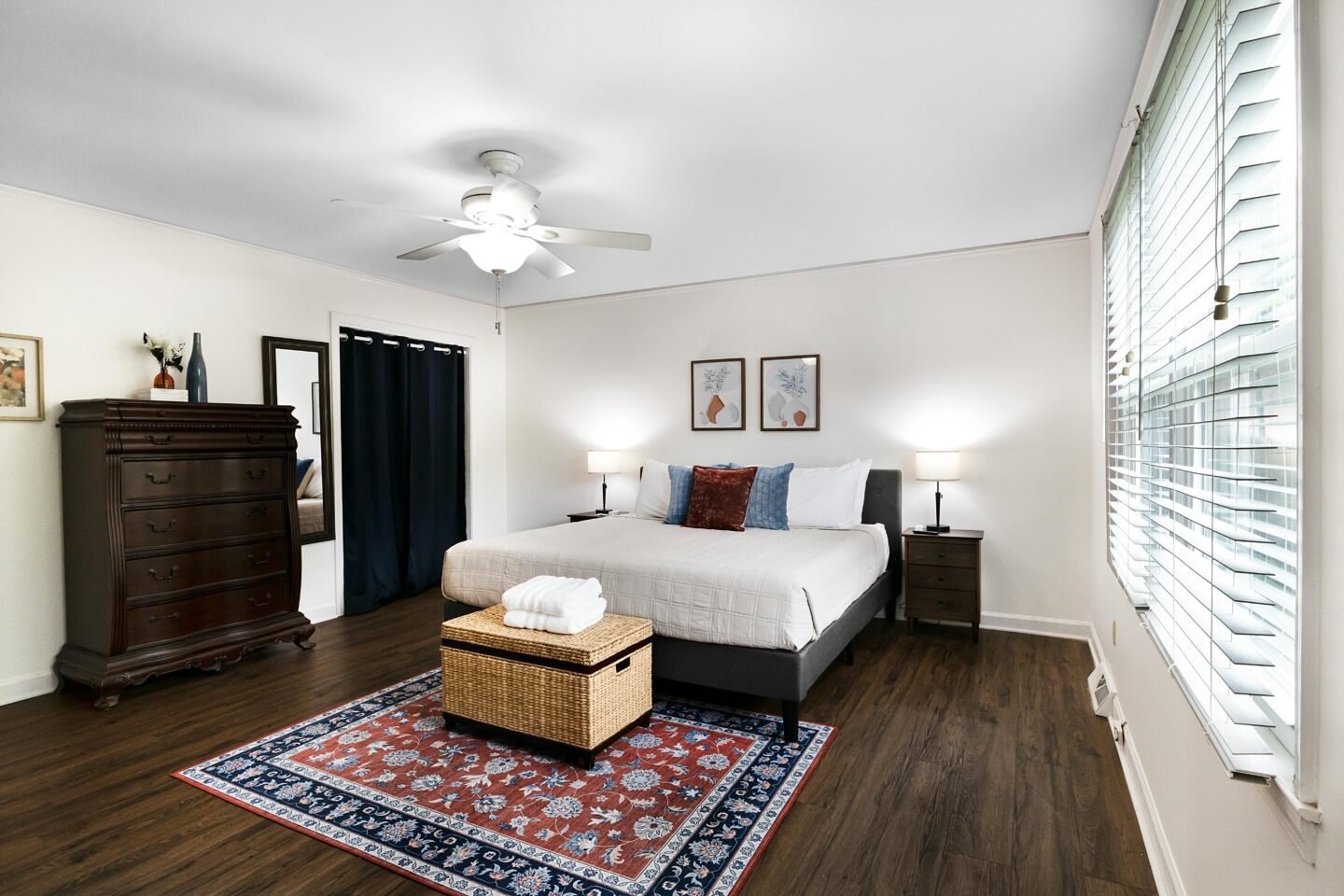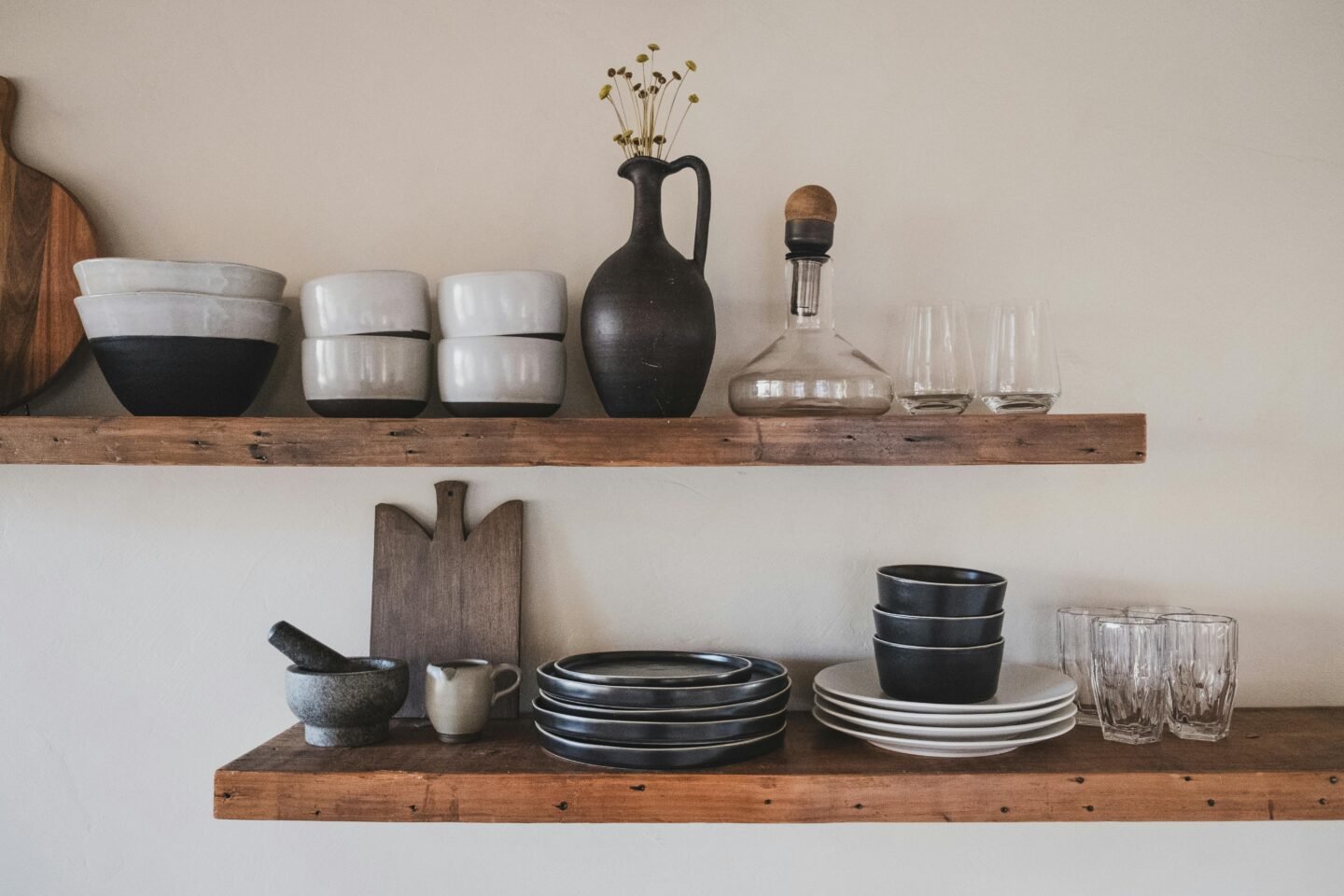Hey beautiful mama,
Can we talk about one of my favorite secrets for creating a home that feels collected, unique, and absolutely beautiful without breaking the bank? I’m talking about thrift store shopping for home decor – and not just any thrift store shopping, but strategic, intentional treasure hunting that transforms your space one amazing find at a time.
I know what you might be thinking: “Thrift stores are overwhelming and everything looks like someone else’s castoffs.” But friend, I’m about to change your perspective completely. Some of my most treasured home pieces – the ones guests always ask about – came from thrift stores for under $10.
Let me teach you how to shop like a pro and find those hidden gems that will make your home feel like a magazine spread (without the magazine budget).
The Mindset Shift That Changes Everything
First, we need to talk about how to see thrift store shopping differently. You’re not shopping for someone else’s rejects – you’re treasure hunting for unique pieces with character and history that you simply can’t find in big box stores.
That vintage brass candlestick that costs $3? It would be $45 at Pottery Barn, and it wouldn’t have the patina and story that makes it special. Those solid wood picture frames that someone painted white? Perfect for your gallery wall, and you can easily change the color if you want.
You’re not settling for second-best – you’re choosing one-of-a-kind pieces that reflect your personal style.
Before You Go: The Strategy Session
The difference between successful thrift shopping and coming home frustrated is having a plan. I never walk into a thrift store without doing these three things first:
Take inventory of what you actually need. Walk through your house with your phone and take pictures of spaces that need something. Maybe it’s that empty corner in your living room, the blank wall in your hallway, or your dining table that needs a centerpiece.
Measure everything. I cannot stress this enough. Keep a small measuring tape in your purse and know the dimensions of your spaces. That gorgeous vintage chest won’t be such a great deal if it doesn’t fit through your front door.
Set a realistic budget. Thrift shopping can be addictive because everything seems like such a good deal. Decide before you go how much you’re willing to spend, and stick to it.
The Best Times to Shop (This Makes All the Difference)
Wednesday through Friday mornings are pure gold for thrift shopping. The stores have usually restocked from weekend donations, but the weekend shoppers haven’t picked through everything yet. You’ll find the best selection with the fewest crowds.
End of month shopping can be amazing because many people donate items when they’re doing monthly decluttering. January and September are particularly good because people are decluttering after holidays or back-to-school season.
Avoid Saturdays unless you love crowds and picked-over merchandise. Everyone has the same idea about weekend thrift shopping.

What to Look for: The Golden List
Solid Wood Furniture Real wood furniture is expensive to buy new but plentiful at thrift stores. Look for pieces with good bones – solid construction, dovetail joints, and minimal damage. A little wear or ugly paint can be easily fixed, but poor construction can’t.
Vintage and Antique Glassware Beautiful serving pieces, vases, and decorative bowls are thrift store gold. Look for cut glass, colored glass, and unique shapes. Even if you don’t know the maker, quality glass feels substantial and has a certain clarity.
Picture Frames (All Sizes) Good frames are expensive, but thrift stores are full of them. Buy any frame with good bones, regardless of the current finish. Spray paint can transform any frame to match your decor.
Books for Styling Old books, especially hardcovers, add instant character to shelves and coffee tables. Look for interesting colors, classic titles, or books about subjects you love. Don’t worry about reading them – these are for decoration.
Baskets and Storage Wicker baskets, wooden crates, and vintage suitcases make beautiful storage solutions. They add texture and warmth while hiding clutter.
Mirrors A good mirror can make any space feel larger and brighter. Even if the frame isn’t perfect, mirrors are easy to update with paint or new frames.
Candlesticks and Vases These are the accessories that make a house feel like a home. Look for interesting shapes, textures, and materials. Group odd numbers together for the best visual impact.
Quilts and Textiles Vintage quilts, even with some wear, make beautiful wall hangings or throws. Look for interesting patterns and colors that speak to you.
What to Avoid: Learning from My Mistakes
Electronics or anything with cords – Unless you can test it right there, don’t risk it. The exception might be vintage-style lamps if you love the base and don’t mind rewiring.
Upholstered furniture unless you’re prepared for deep cleaning or reupholstering. You never know what’s living in those cushions, and professional cleaning can cost more than the piece is worth.
Anything damaged beyond your skill level to repair. Be honest about your DIY abilities. That gorgeous chest with a broken drawer might be a great deal for someone handy, but not if it’ll sit in your garage for two years.
Items that don’t fit your actual lifestyle. That elaborate silver tea service might be gorgeous, but if you never entertain formally, it’ll just collect dust.
The Art of Seeing Potential
This is where thrift shopping becomes an art form. You need to look past the current state and see what something could become.
Look at shape and structure first. A lamp with an ugly shade might have a beautiful base. A picture with a terrible print might have an amazing frame. A wooden piece painted an awful color might be gorgeous underneath.
Consider the quality of materials. Real wood, solid brass, actual crystal, and quality ceramics are worth investing in even if they need some TLC.
Think about scale and proportion. A piece that’s too small for one space might be perfect somewhere else in your home.

The Negotiation Game
Most thrift stores have pretty firm pricing, but some will negotiate, especially on larger items or if you’re buying multiple pieces.
Ask about discount days. Many stores have senior discounts, student discounts, or certain color tag sales.
Buy multiples for better deals. If you love several small items, ask if there’s a discount for buying them together.
Check for damage and point it out politely. If there’s a chip or scratch you hadn’t noticed, mention it. They might take a few dollars off.
Be prepared to walk away. If the price doesn’t feel right, leave it. There’s always another treasure waiting.
The Transformation: Making It Yours
Half the fun of thrift store finds is making them work with your decor. Here are some simple ways to customize your treasures:
Paint is your best friend. Chalk paint, spray paint, and regular latex paint can transform almost anything. A coat of white paint makes everything look fresh and cohesive.
Change out hardware. New knobs and pulls can completely update furniture pieces. This is especially effective on dressers and cabinets.
Add your own style elements. Tie ribbon around vases, add battery-operated lights to lanterns, or group items in unexpected ways.
Mix high and low. Combine your thrift store finds with a few new pieces or family heirlooms for a collected-over-time look.
Styling Your Finds: The Finishing Touches
Group items in odd numbers. Three candlesticks look better than two. Five small vases create more impact than four.
Vary heights and textures. Mix tall and short, smooth and rough, shiny and matte for visual interest.
Create vignettes. Group related items together on shelves, mantels, or coffee tables. A few books, a small plant, and a pretty object create an instant styled moment.
Don’t fill every space. Leave some breathing room. Your beautiful finds need space to shine.
The Seasonal Rotation Strategy
One of my favorite secrets is buying seasonally appropriate items year-round and storing them for later. That beautiful autumn-colored pottery you find in March? Perfect for your fall mantel. The coastal-themed pieces you discover in November? Save them for summer styling.
This approach lets you build a collection of seasonal decor without paying full retail prices when those items are in high demand.
Building Your Signature Style
After a few successful thrift shopping trips, you’ll start to notice patterns in what draws your eye. Maybe you’re always drawn to blue and white ceramics, or perhaps brass accents keep finding their way home with you.
Embrace these patterns. Your natural preferences are developing your signature style. A collection of similar items (all blue pottery, various brass candlesticks, or multiple vintage books) creates more impact than random unrelated pieces.
The Community Aspect
Don’t underestimate the relationships you can build while thrift shopping. Store employees often know when new donations are coming in and might give you a heads up about special pieces. Other regular shoppers can become friends who text you about great finds.
Be kind to everyone. The volunteers and employees at thrift stores are often doing important community work. A little kindness goes a long way and might even lead to insider tips about the best shopping days.
When Things Don’t Work Out
Not every thrift store purchase will be a winner, and that’s okay. I’ve bought pieces that looked perfect in the store but just didn’t work in my space. Here’s what to do:
Try it in different rooms. Sometimes a piece just needs to find its right home in your house.
Give it time. Sometimes our style evolves to appreciate a piece we weren’t sure about initially.
Re-donate it. If it’s truly not working, donate it back. Someone else will love it, and you’ve only lost a few dollars.
Learn from mistakes. Every “miss” teaches you something about your taste and shopping skills.
The Joy of the Hunt
Here’s what I love most about thrift store shopping for home decor: every trip is an adventure. You never know what treasures you’ll discover, and the stories your pieces have make your home feel rich with history and character.
Your friends will ask where you found that amazing vintage mirror or those perfect brass candlesticks, and you’ll smile knowing you paid a fraction of retail for something truly unique.
Your First Treasure Hunt
Ready to start your own thrift store adventure? Here’s your mission for this week:
Pick one room that needs something special. Maybe it’s your living room mantel, your dining room table, or that empty corner in your bedroom. Take a photo, measure the space, and set a budget of $20-30.
Visit one thrift store during a weekday morning with these measurements and your mission in mind. Don’t try to redecorate your whole house in one trip – just find one perfect piece for that one space.
I guarantee you’ll come home with something amazing and a new appreciation for the treasure hunt that is thrift store shopping.
What space in your home is calling for a special thrift store find? I’d love to hear about your discoveries and see what treasures you uncover.
Happy hunting, Mish
P.S. Don’t forget to take before and after photos of your thrift store transformations. There’s nothing more satisfying than seeing the amazing potential you spotted come to life in your home.